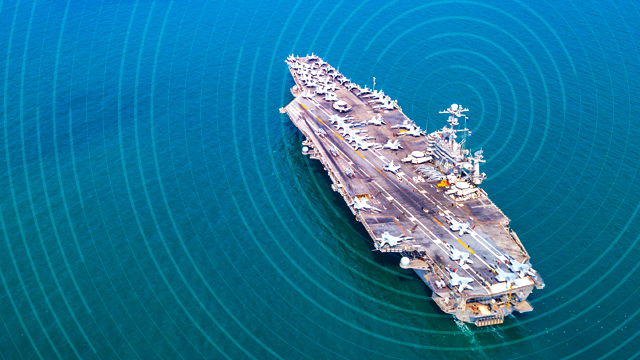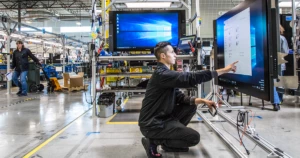U.S. Navy taps Microsoft Azure to enhance weather modeling
With two tropical storms headed for the Gulf Coast, a U.S. Navy team of leading engineers and scientists partnered with their Microsoft Federal counterparts over the Aug. 22–23 weekend to successfully deploy an enhanced weather model capable of rapidly scaling weather and ocean pattern predictions on demand. The Coupled Ocean/Atmosphere Mesoscale Prediction System, or COAMPS-TC, began running in a production-like Microsoft Azure environment on Aug. 23. The proof-of-concept results, posted on Twitter starting Aug. 24, confirm the potential of using our secure cloud to deliver faster, real-time and scalable tropical cyclone forecasts, which result in greater fleet safety and effectiveness and public benefits.

Collaborative effort
This public-private U.S. Navy-Microsoft partnership, which began in January, is a collaborative effort bringing together experts from:
- The Fleet Numerical Meteorology and Oceanography Center, providing worldwide meteorology and oceanography support to U.S. and coalition forces.
- The Naval Research Laboratory, which offers advanced scientific capabilities to bolster our country’s position of global naval leadership.
- Navy Commercial Cloud Services, which develops and executes the Navy’s overarching cloud brokerage structure.
- Navy Facility & Engineering Command, delivering life-cycle technical and acquisition solutions.
- Various Microsoft Federal organizations.
In the project’s first six months, the U.S. Navy worked to build and refine models and data flows in Azure and, by early August, both the global and COAMPS-TC models were running in our trusted cloud. The team used Microsoft CycleCloud to automate scaling of compute power in Azure on demand — comparable to ramping up a datacenter in an hour. CycleCloud enables the Navy to use its existing high-performance, open-source operating technologies in Azure — such as Linux and Cylc — leading to rapid adoption and reduced costs. In simplified terms, data from multiple data sources feed the global model, which produces output that COAMPS-TC uses to address specific weather events, such as hurricanes, tropical cyclones and tropical depressions.
Simultaneous tropical storms
On Saturday, Aug. 22, recognizing the unusual occurrence that two tropical storms were expected to simultaneously hit the Gulf Coast, the team used the opportunity to showcase the viability and scalability of the Azure-powered weather modeling capability over the existing on-premises environment. The Azure cloud technology allowed the team to quickly build and disseminate weather and ocean proof-of-concept models on Twitter by Monday.
Positive outcomes
The project demonstrated nimble technical engineering, collaboration of multiple government and industry teams, and partnership to deliver mission-critical requirements anytime, anywhere. The successful COAMPS model running in Azure generated many positive outcomes in modeling weather and ocean patterns associated with tropical storms Laura (later elevated to Hurricane Laura, Category 4) and Marco, including:
- Agility in rapidly responding to severe weather systems, with cost-effective, high-quality results:
- Available in under six hours, exceeding expectations.
- At three times the speed and more than double the volume of respective on-premises production rates and capacity.
- Costing one-tenth of results produced by the existing datacenter.
- Serving as a prototype for:
- Navy Continuity of Operations Planning, which maintains mission-essential functions in emergency situations.
- Effective partnerships with internal and external research organizations to speed development, implementation and transformation of existing operations.
- Validating Microsoft Azure delivers the adaptable, dynamic and scalable high-performance computing capacity required by the Navy, with:
- A robust architecture enabling resilient data communications.
- The full scalability of compute-intensive weather models beyond the normal capacity of on-premises systems.
Mission-critical work
Microsoft Federal is proud to be part of this unique partnership that’s driving innovation and helping fulfill the missions of each participating Navy organization. For more than 40 years, we’ve been dedicated to serving government customers as they deliver mission-critical work and create more efficient, effective operations. Our team today continues Microsoft’s commitment of empowering federal agencies of all sizes and scopes to achieve more for all of us.




